Good trapeze starts with good habits
Published on February 3rd, 2016
David Hughes, a former Olympic 49er skiff coach and an Olympic 470 European and World Cup champion, hopes to medal at the 2016 Olympics in Rio with skipper Stuart McNay. Here he shares guidance about good trapeze starts, starting with good habits, balance, and control.
By David Hughes, Sailing World
Each spring, my attention to trapezing is recaptured with two events: the J.J. Giltinan Regatta in Sydney, and the Princess Sofia Trophy in Mallorca, Spain. The J.J.s are the 18-footer world championships, and exemplify some of the tightest and wildest racing that skiff sailing has to offer, with every member of the crew trapezing. Quite simply, those regattas are a catalog of balancing successes and failures. Teams sailing at the highest level demonstrate smoothness, calmness and steadiness. They are “fighting” to maintain control of their bullish skiffs, but it doesn’t look like fighting; rather, it looks like balance and control.
Spain’s Bay of Palma, on the other hand, is home to the Princess Sofia and the de facto spring training ground for Olympic hopefuls. It is to Olympic sailing what Florida is to the Major Leagues. It’s cold, choppy, windy and anything but easy sailing, perfect for separating the Olympic, trapezing wheat from the chaff. Palma showcases arguably the best trapezing in the world.
One of the biggest challenges of trapezing is that you must perform your normal sailing roles, such as sail trim, strategy and tactics, at the required level, but with the added dimension of playing an enormously more significant part in boat balance. This is true whether you are a Club 420 junior sailor, an Olympic competitor or anything in between. But regardless of skill level, the fundamentals of proper technique are the same. First, let’s go over a few definitions.
In general terms, I lump trapezing into one of two basic conditions: full-powered or underpowered. Full-powered is at or beyond the threshold where you’re fully stretched or flat-out on the wire, and where you can deliver no further leverage; you’re only so heavy and so tall. Underpowered is everything beneath this threshold, and involves “finesse” trapping, as your actions on the wire vary from close to the boat to outstretched.
The foremost element of good trapeze technique is symmetry. We are all asymmetric by nature (right-handed, left-handed, right-foot-dominant, etc.). But your body mechanics on port tack should mirror starboard tack and vice versa; the same is true with jibes and tacks. For example, upwind on a 470, your aft hand controls the jib sheet, while your forward hand grabs the trap gear and adds extra leverage when you stretch it out overhead. It’s paramount that both port and starboard tack feel the same. If you’re thinking, “I’m better on one tack than the other,” force yourself to be ambidextrous. Your end goal is an inability to distinguish a weak side.


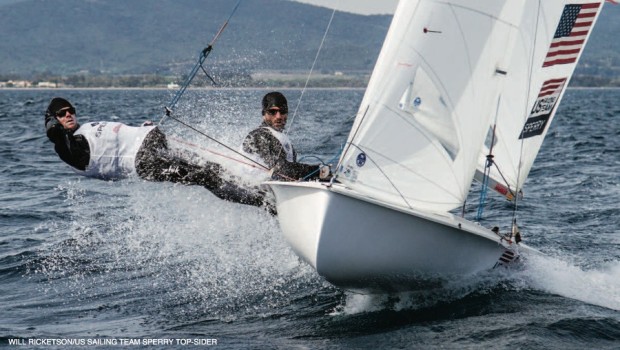


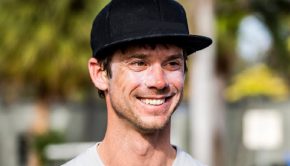
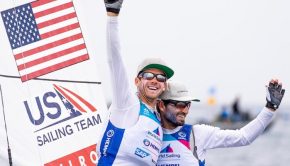
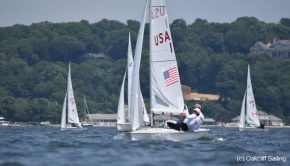
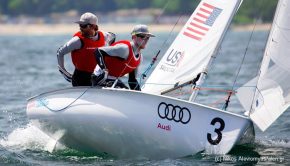
 We’ll keep your information safe.
We’ll keep your information safe.